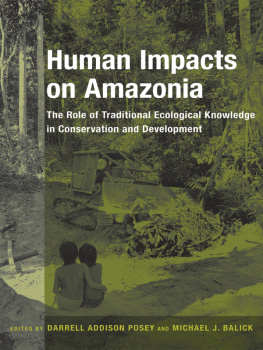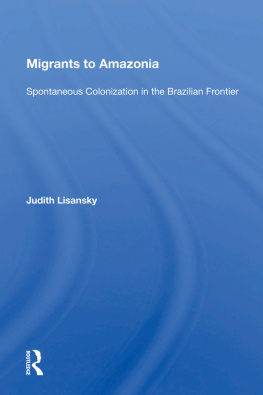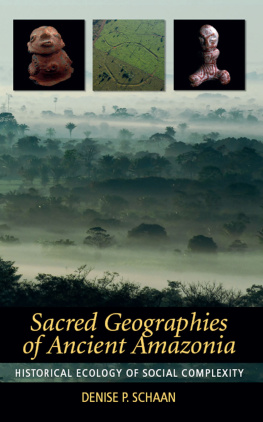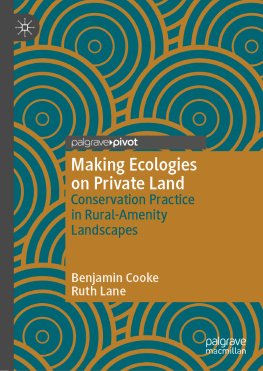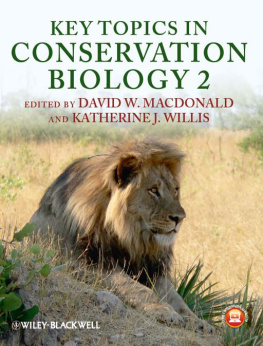Human Impacts on Amazonia

Ethnobotanist Dr. Darrell Addison Posey (19472001) with two Kayapo friends on a forest expedition in Kayapo, Gorotire, AmazonBrazil, to learn about the uses of medicinal plants in Amazonia. Dr. Posey was a champion for the intellectual property rights of indigenous peoples. His work was instrumental in acknowledging a series of rights for traditional peoples that were included in the 1992 biodiversity convention at the Rio Earth Summit. (Photo: Mark Edwards/Still Pictures)

COLUMBIA UNIVERSITY PRESS
Publishers Since 1893
New York Chichester, West Sussex
cup.columbia.edu
Copyright 2006 Columbia University Press
All rights Reserved
E-ISBN 978-0-231-51735-5
Library of Congress Cataloging-in-Publication Data
Human impacts on Amazonia : the role of traditional ecological knowledge in conservation and development / edited by Darrell Addison Posey and Michael J. Balick.
p. cm.(Biology and resource management series)
Includes bibliographical references and index.
ISBN 0-231-10588-6 (alk. paper)ISBN 0-231-10589-4 (pbk. : alk. paper)
1. Indigenous peoplesEcologyAmazon River Region. 2. Traditional ecological knowledgeAmazon River Region. 3. Indians of South AmericaEthnobotanyAmazon River Region. 4. NatureEffect of human beings on Amazon River Region. 5. Soil degradationAmazon River Region. 6. Environmental degradationAmazon River Region. 7. Amazon River RegionEnvironmental conditions. I. Posey, Darrell Addison, 19472001. II. Balick, Michael J., 1952 III. Biology and resource management in the tropics series.
GF532.A4H85 2006
304.209811dc22 2005053931
A Columbia University Press E-book.
CUP would be pleased to hear about your reading experience with this e-book at .
Amazonia is usually thought of as a vast wildernessa huge empty region, full of pristine nature. But for the contributors to this volume, the Amazon Basin is indelibly sculpted by human impacts on its history, landscapes, and ecosystems. And for the indigenous peoples of Amazonia, the forests, savannas, hills, and streams are their homes, gardens, backyards, hunting reserves, and spiritual retreats.
Charles Clement () describes a considerable variety of pre-Columbian domesticated landscapes that are defined using genetic, botanical, and ethnobotanical methods. He also proposes that through indigenous coevolution with plants, Amazonia became one of the major world centers for crop domestication.
But domestication cannot be used as the only yardstick for human manipulation of plants. Jan Salick () analyses the conundrum some native Amazonians still face when deciding whether to collect or cultivate plants such as ipecac (Carapichea ipecacuanha (Brot.) L. Andersson). In some cases it has been preferable to improve useful plants in the setting of a domesticated landscape rather than to bring them into human caredependent full domestication. The importance of these nondomesticated (or semidomesticated) species has been underestimated and underesteemed by scientists.
The history of Amazonia for most people begins with the discovery of the New World in 1492. Tragically, after European contact and colonialism Amazonia was marked forever by a long sequence of human and ecological disasters. John Hemming () reminds us that the nature of the tropics in Amazonia has been to some degree defined to the outside world by the early visitors who constructed its identityin terms both positive and negative.
Disease is not the only foe of modern Amazonia and Amazonians. Elizabeth Allen () points out how the luxurious wetlands and riverine ecosystems of Amazonia are disappearing under the unseeing eyes of the rest of the world.
Peter Furley () warn us that the soils that literally underlie the existence of Amazonia are being eroded and lost at unimaginable rates. Development projects mushroom throughout the region, with developers giving little thought to the degrading impact on the soil. If developers care so little about such a fundamental element of Amazonia, it should come as no surprise that they show little or no sensitivity toward native Amazonians and biodiversity conservation.
Such insensitivity makes no economic sense according to Philip Fearnside (), who argues that standing forests (and the diversity of life-forms associated with them) make far more economic sense than do charred, chainsawed forests. Fearnside proposes a development paradigm based on the benefits accrued from providing environmental services for forests and forest products.
Benefits usually connotes economic gain, rather than social or ecological progress. Since colonization, Amazonia has been viewed as a source of raw materials and natural products. The proliferation of searches in tropical ecosystems for commercially valuable genetic and biochemical resources, especially for the pharmaceutical, biotechnological, and agricultural industries, has made bioprospecting a household word. Frequently cited figures illustrate the enormous market for natural-product-based pharmaceuticals (US$43 billion per year) and seeds derived from traditional crop varieties (US$50 billion per year); the calculations for other natural compounds (those useful for hair and body products, oils, essences, dyes, colorings, etc.) are equally impressive.
Interest in traditional knowledge about the uses of flora and fauna has also dramatically increased because some companies predict that research and development costs could be cut by as much as 40 percent if traditional knowledge is used to help guide research and development efforts. Such a savings could be remarkable for global pharmaceutical companies that usually invest US$200 million or more in research and development for a single new drug. Commercial production of medicinal plants, whether for research or as raw materials, provides additional sources of income to those involved. But the issue is more complicated than that. Claudio Pinheiro () illustrates the problem, citing the large-scale production of the medicinal forest plant jaborandi (Pilocarpus microphyllus), which has benefited the pharmaceutical company but has left the local communities impoverished.
William Milliken () alerts us that outsiders have been given too much free rein over the resources of native Amazonians. Instead, outsiders should be a source of guidance for local peoples efforts. He explains that one indigenous group, the Yanomami, needs advice and support for their attempts to sell their own herbal remedies and develop their own science parks for ecological and ethnoecological study.
But entering the market economy, particularly outside of ones immediate region, is not so simple. Alcida Ramos () sounds a powerful warning message: the notion of indigenous knowledge as a material resource that can simply be seized for efficient exploitation is profoundly flawed. Local knowledge is embedded in a web of social, cultural, and spiritual values that can be weakened or destroyed by market forces.
Thus successful projects require policy and legal supports that guarantee respect for local values. Michael Richards () warns that attempts by donors and funders to promote market-based forestry tend to undermine indigenous (gift economy) institutions by allowing the term forestry to refer only to planted trees. That ignores indigenous strategies for forest utilization and conservation, which are embedded in more complicated integrated resource-management systems that value forests for more than their wood and timber products.
Perhaps the best way to use traditional knowledge is to let the local people themselves guide and control its use and application. Christine Padoch and Miguel Pinedo-Vsquez () describes how the practices of peasant riverine communities in the Lower Amazon are an efficient means to conserve biodiversity. But Harris also concludes that The extent to which traditional ecological knowledge may have a role in the future of the floodplains depends almost entirely on the ability of its inhabitants to secure legal ownership of land and water areas in their vicinity. Ramos and Milliken emphasize that land, water, and resource rights are not the only legal protections required. Native Amazonians also must have protection of their intellectual property, genetic resources, and traditional knowledge.
Next page
